We left Kalvholmen just about a month ago and we are already in Belgium! Sailing along Germany and the Netherlands still felt like being in the surroundings of Sweden because we see a lot of boats from these countries when sailing along the Swedish east coast. But Belgian flags in the Swedish archipelago is more of a rarity (ok it is also because Belgium doesn’t have a very long coastline and therefore doesn’t have a lot of boats). We also start to see less and less Swedish made boats and always more French manufactured boats. There are no more boats with the “peke” (the platform many sailboats in Sweden have to help going on land in the islands). The atmosphere is changing. It is getting more and more exotic for us coming from the north and now in Belgium we start to realize that we are actually far from home. We feel proud of ourselves that we came this far, proud of the route we made until here, proud that we solved what we needed to solve and proud that we made all that together. But we see that we need to learn more about Lovisa. We have actually been working on Lovisa more than we have been sailing her and this means that we don’t always understand how to do to get things right. Every day we learn something new and this is also a very nice feeling.
We feel very grateful for the support and the various tips we got on our way from all the people we met so far. The way to Caribbean is long, too long to think about actually. What counts is only now … and the weather forecast for tomorrow.
After a long sail from Cuxhaven we felt we needed a deserved rest. We choose to stay in Zeebrugge not only because our friends on S/Y CAP J made a good advertising of their home harbor (BZYC) but also because it is close to Bruges, a pitoresque city just a few km south of Zeebrugge. Here in Belgium we took the opportunity to eat their “Moules frittes” (mussels and fries). Delicious !
The day after our arrival S/Y Alba also came in to stay in BZYC harbor followed by another Swedish boat, S/Y Texas White Lady, sailed single handed by a Swedish retired man on his way to Spain. Or maybe further since being retired, he has no work he needs to come back to!
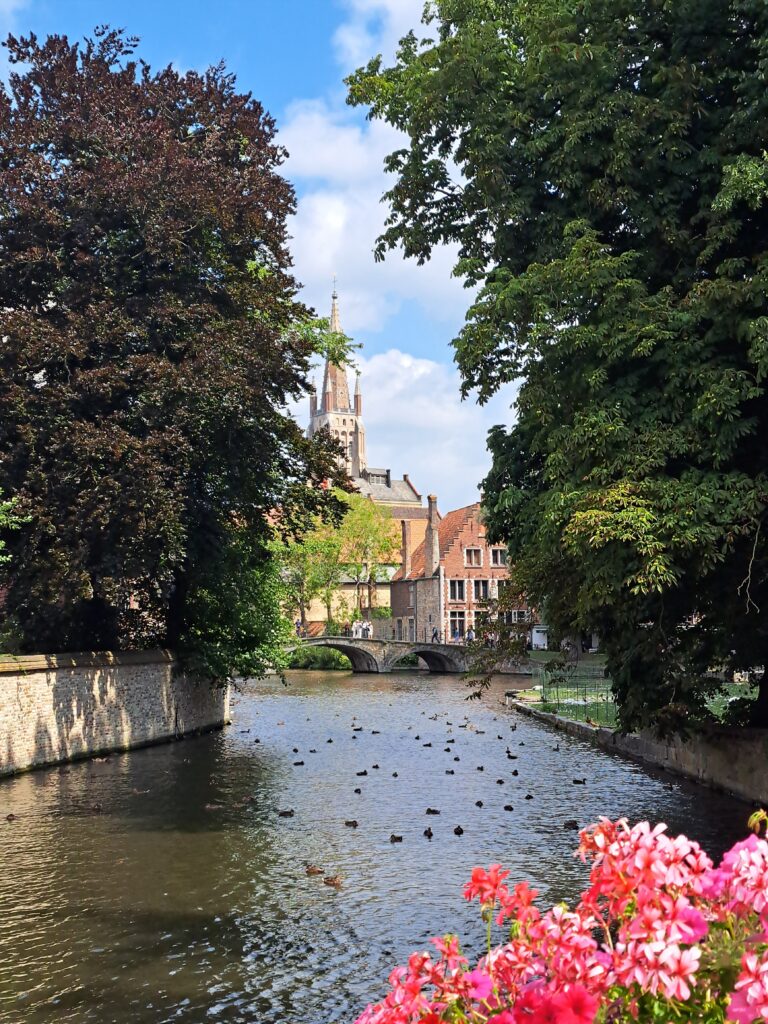
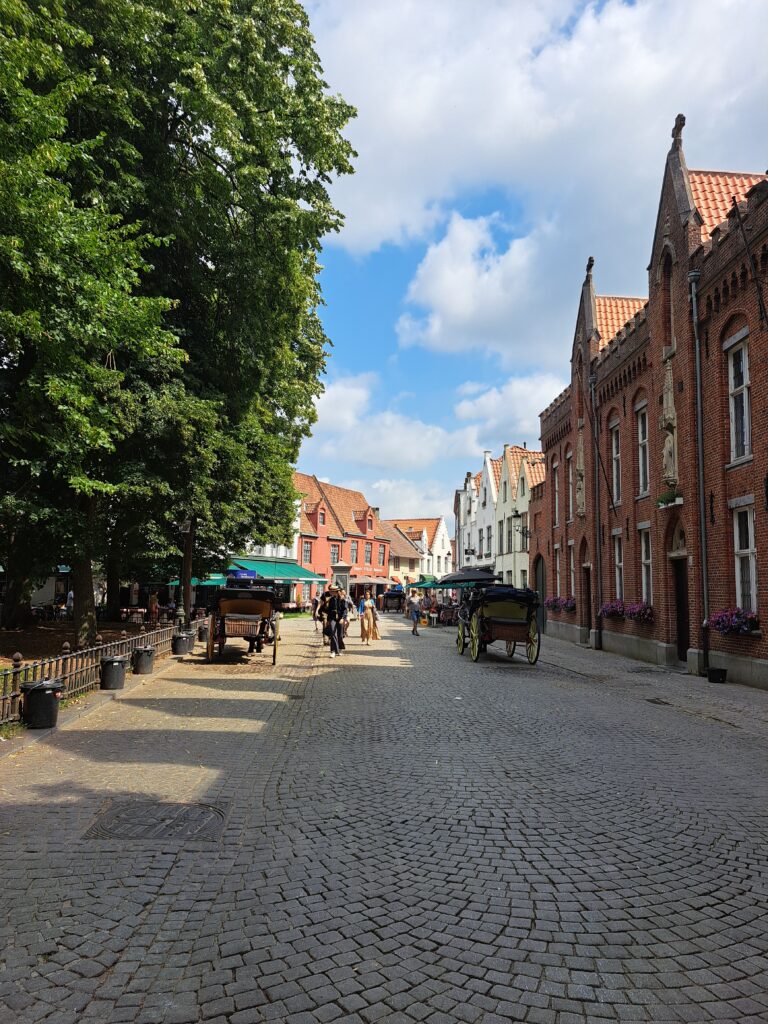
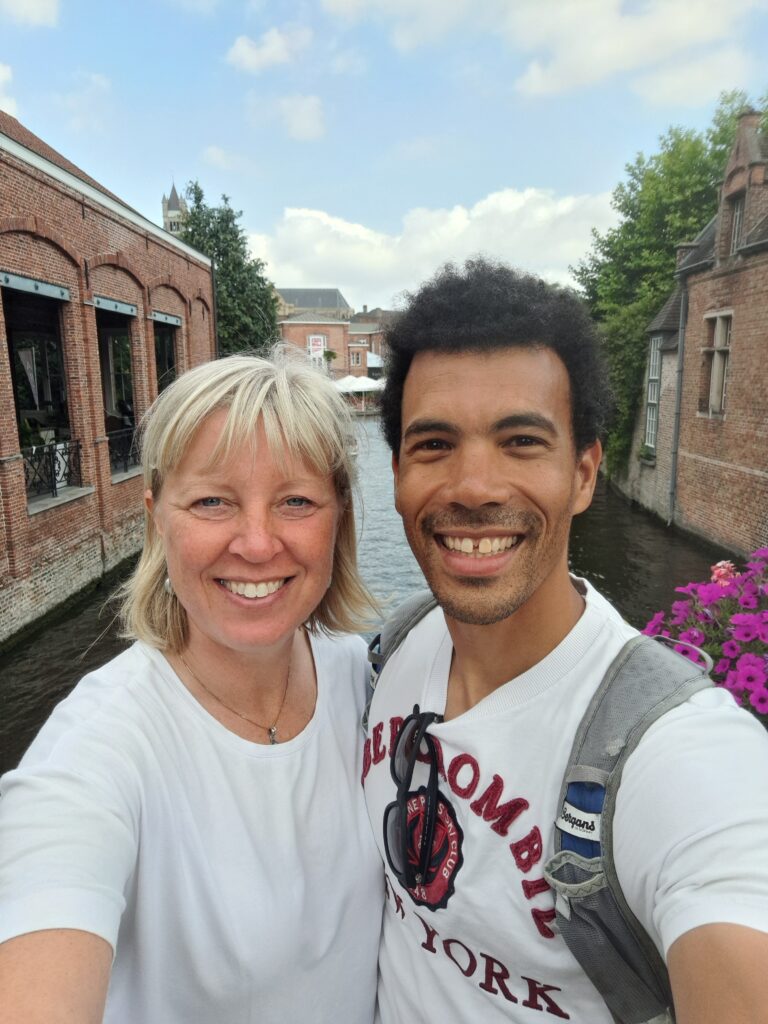
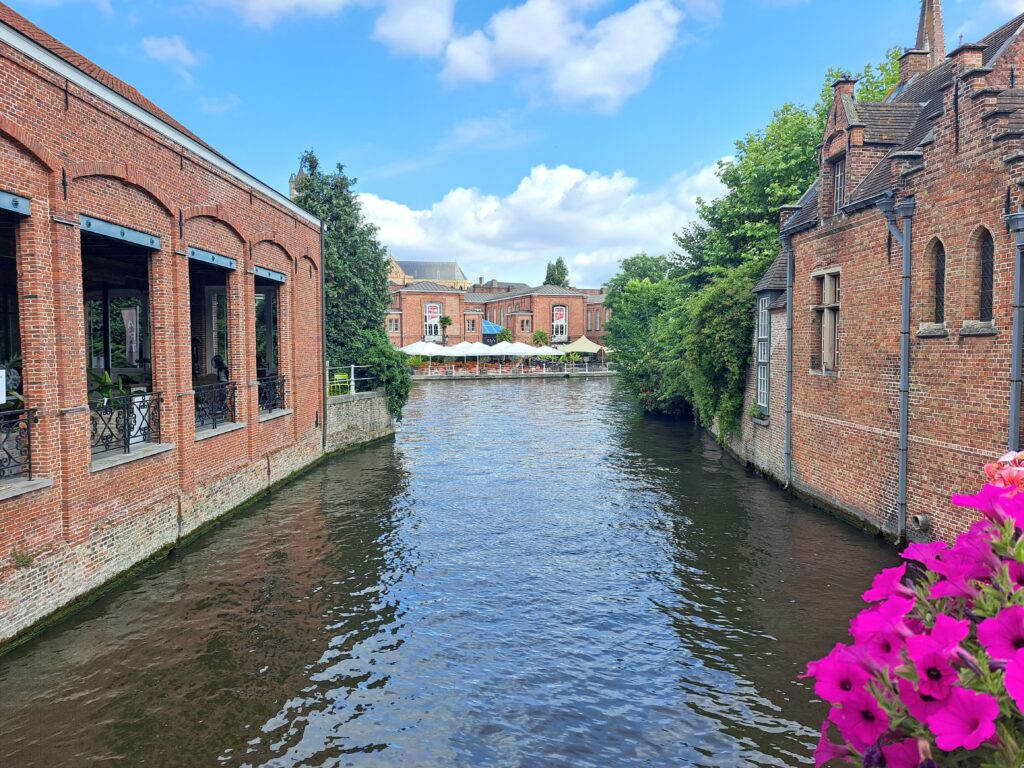
The second day after our arrival, the winds started to blow strongly so we were glad to be in a harbor very protected from winds and swell. We took the opportunity to go ahead with some boat work. Maria repaired the gennaker sock, did some dyneema rope splicing and some tailoring. Emilien started the installation of the pole for the wind turbine (a work that had been pending since we left Kalvholmen).
We spent 5 nights in Zeebrugge and left towards Dunkerque on Thursday (July 16) after the strong winds from west disappeared. On Thursday there was basically no wind at all so we made the whole way on engine. Since the wind had stopped blowing for several hours when we left, there was also no residual wave on the way, just flat water. That made the journey much more enjoyable. We managed to keep the speed over 7 knots for a big part of the trip. Higher speed mean shorter time! We tied up to the dock in Dunkerque just 6 hours after we left the dock in Zeebrugge instead of 8 hours as we calculated considering a speed of 5 knots… This means more time to enjoy the long sandy beach of Dunkerque.
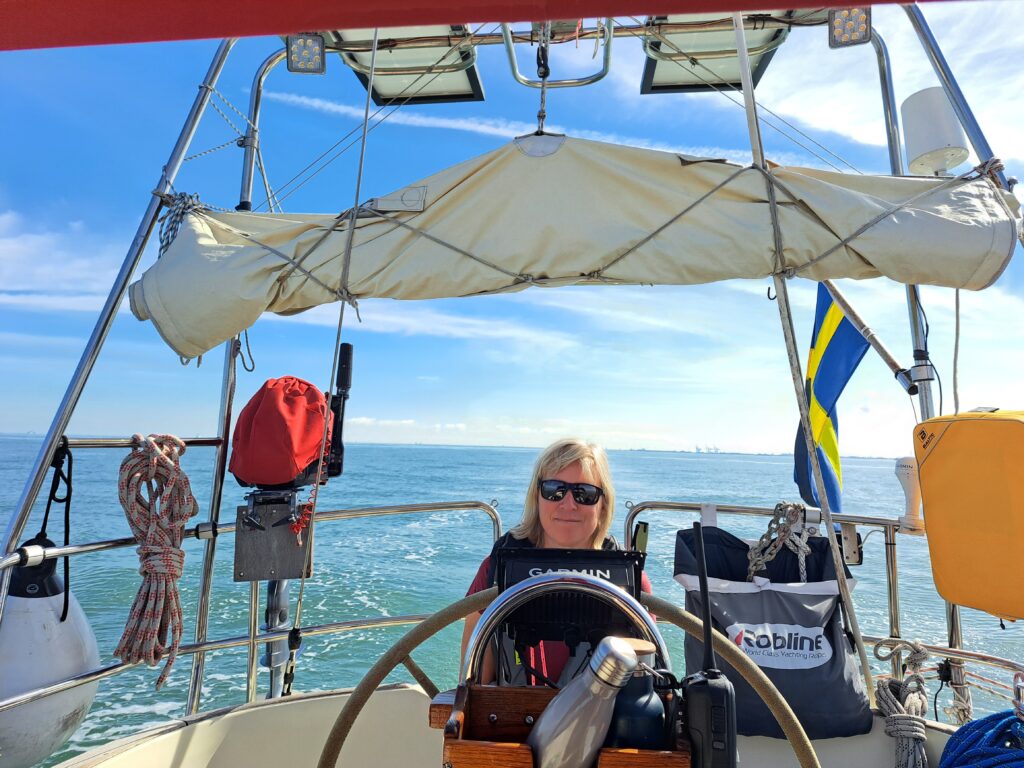
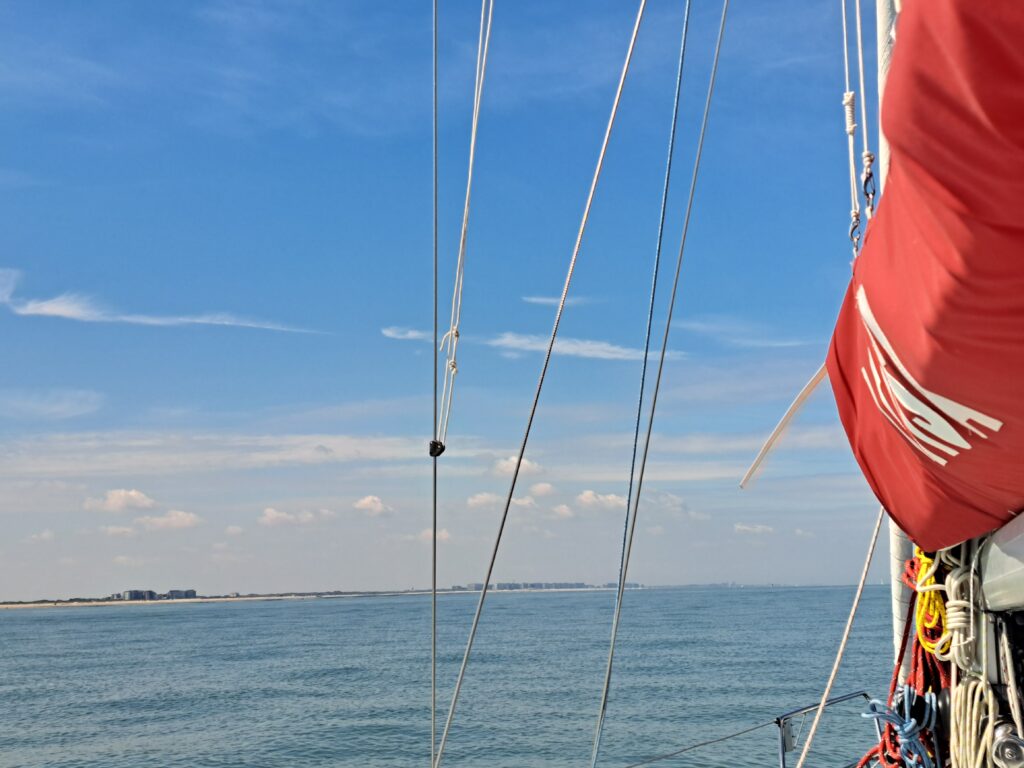
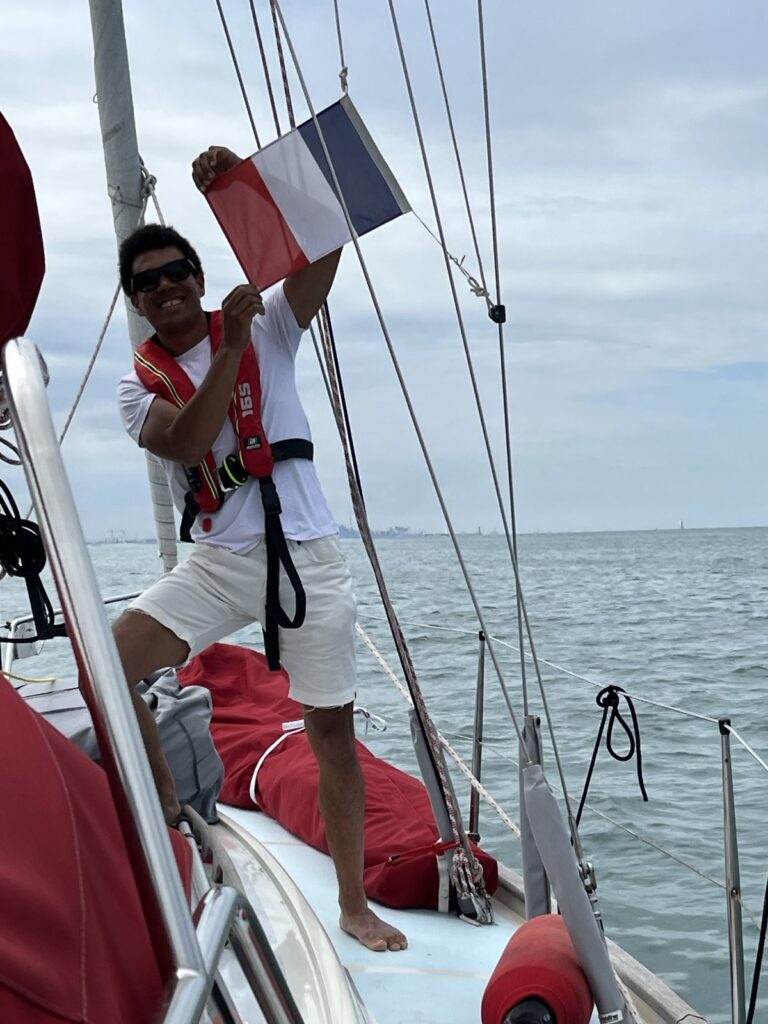
After a very warm welcome in the harbor by the YCMN harbor staff it was time for an ice cream on the beach front, for a swim for Maria followed by a good nights sleep for both of us. Next morning, it was already time to leave Dunkerque. The weather forecast was giving no wind along the whole coast so we didn’t really look further at the details. We were kind of convinced it would be just another day like the previous one. From the berth, it really looked like it, a day like the previous one, but as soon as we got out of the berth and started to motor towards the exist we discovered there was a very thick layer of fog parked right at the entrance of the harbor. In the background, every 2 minutes, we could hear the horn of the ships in the surrounding. Ships that we could not see visually but we could see on the AIS on our plotter and also on the radar. But even with all the electronic equipment onboard, hearing the horn is actually a relief: the horn is something real, when you hear it, then you can be sure there is a big ship out there and it gives you a rough idea where. The radar is a good tool but depends on suitable configuration and the AIS has its own limits as well like not updating the position very regularly. The latter becomes evident when the radar trace of the boat in front doesn’t coincide with the AIS position of that boat and this can make the situation very confusing.
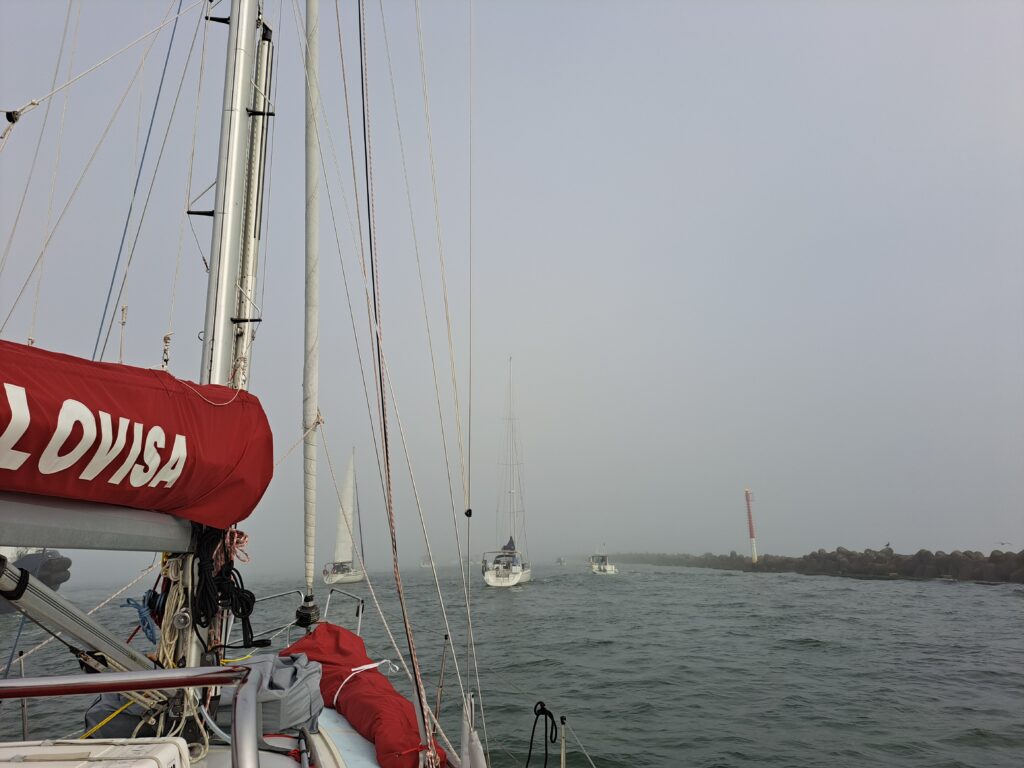
S/Y Alba was also in the group of boats on the way out and took amazing pictures of Lovisa making her way through the fog. Thank you S/Y Alba !
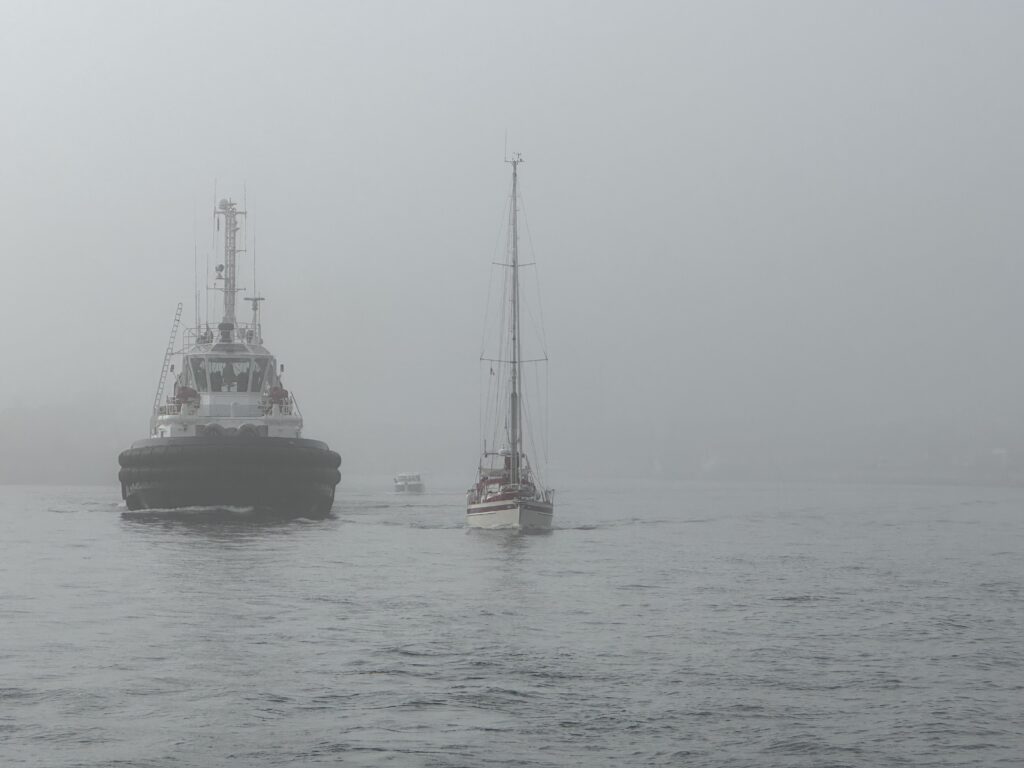

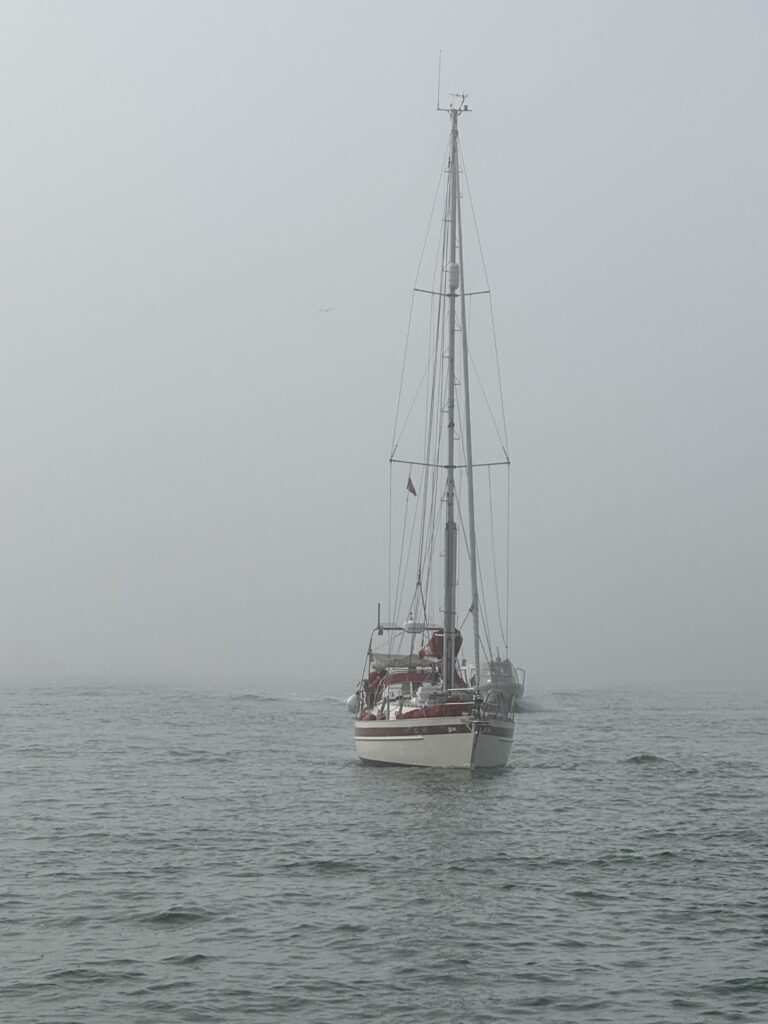
We motored through the fog and the sounds of the horns for about an hour before the fog dissipated leaving us under a clear blue sky the whole way until Boulogne-Sur-Mer. We made the whole way with the currents in our favor with speed over ground sometimes even over 8 knots. On the way we could also see a lot of seals or at least their head popping out of the water from time to time.
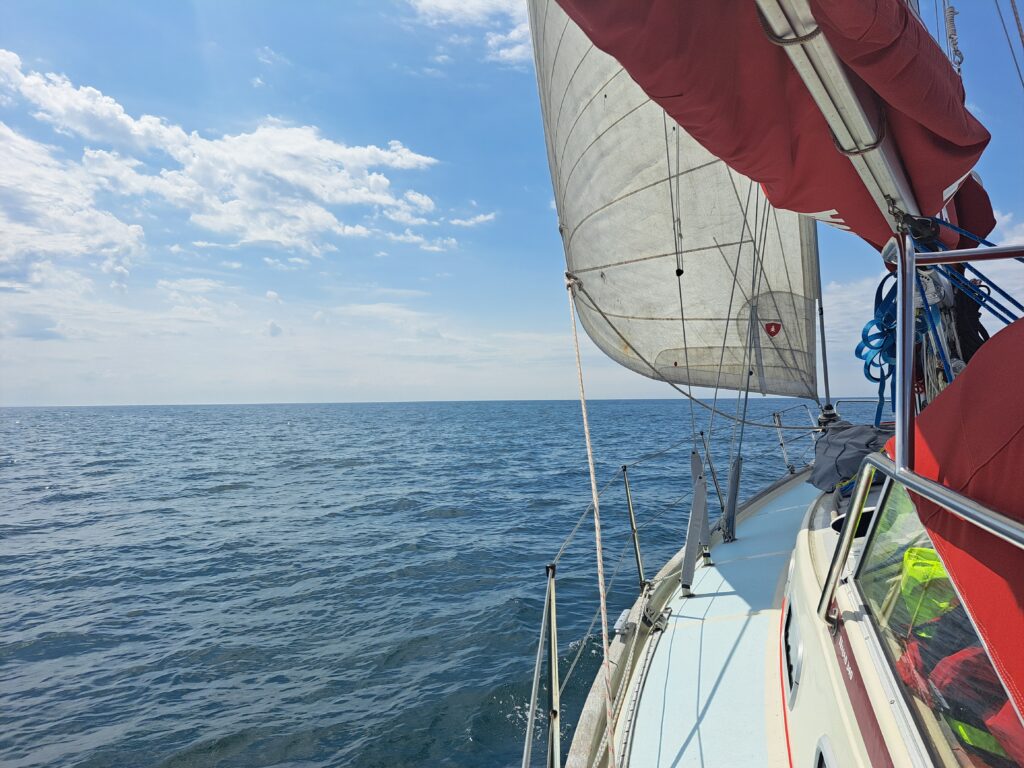
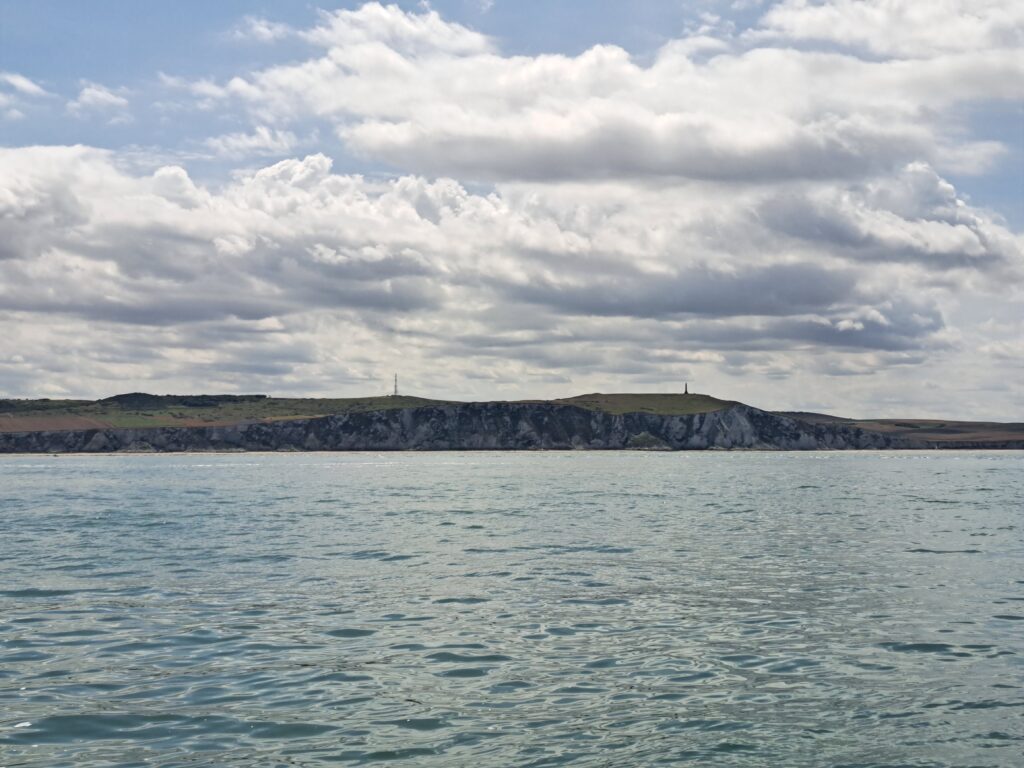
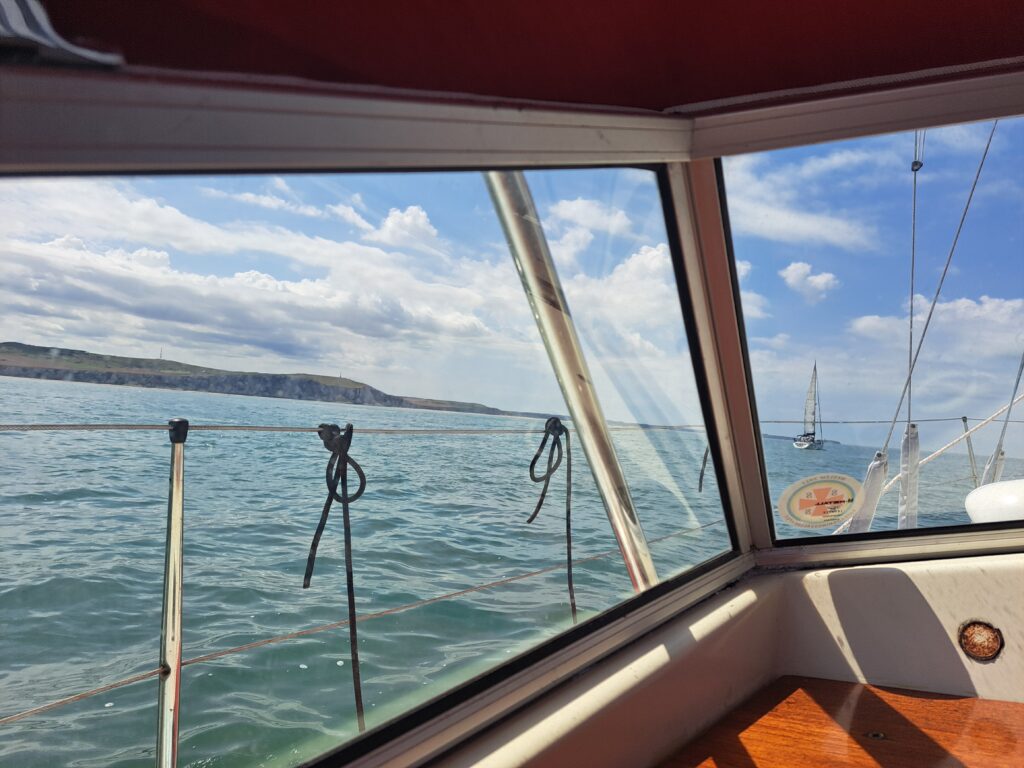

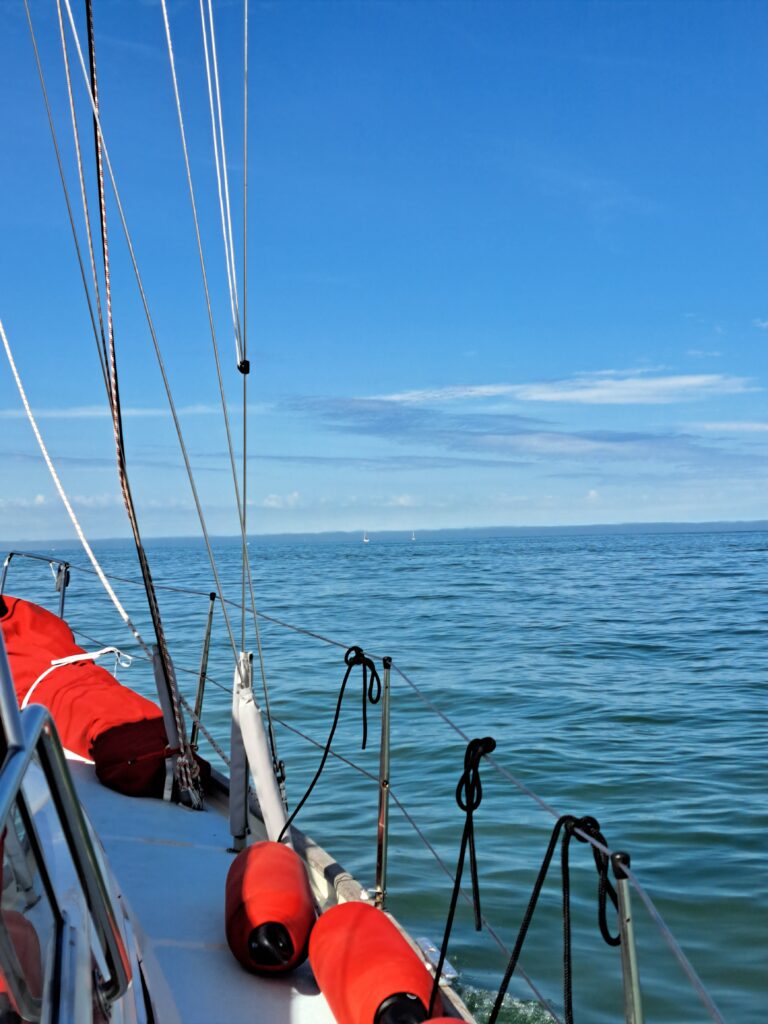
In Boulogne-Sur-Mer we took some time to climb up to the mast to put some product against spiders. We thought there must be a spider living up there building net around the wind instrument when there is no wind and blocking it from turning towards the wind. From Zeebrugge to Boulogne-Sur-Mer the wind direction has always been 32 degrees, independently from the position of the boat.
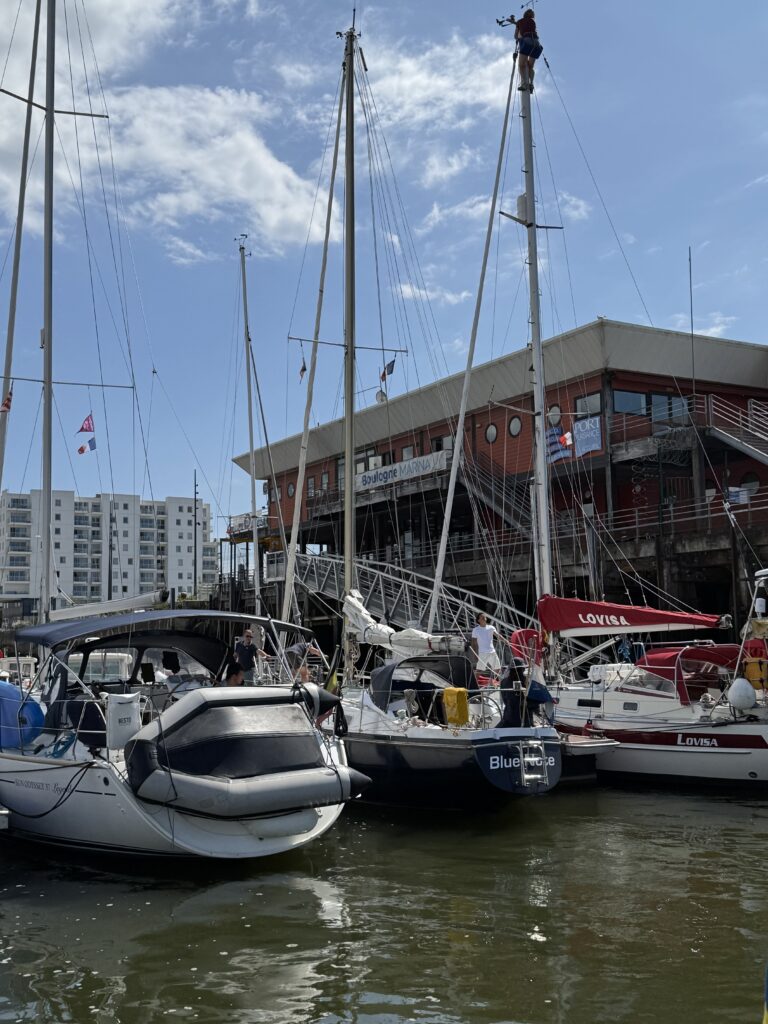
We stayed in Boulogne-Sur-Mer just one night and headed straight towards Dieppe (or nearly straight because there is a new windfarm under construction that we have to round) the day after on Friday (July 19) at 8:30 am with a little bit of motoring to get out of the harbor. We hoisted the sails after we passed the exit of the harbor and enjoyed a nice north easterly breeze. At around 01:00 pm the wind died while turning from to westerly and picked up again to reach 9 to 10 m/s around 03:00 pm. This wind didn’t raise crazy waves so we were happy not to end up on a roller coaster. But the waves were big enough to wash the front of the boat. Things were going smooth until we found a lot of water on the front cabin floor! It didn’t take long to understand what was the problem … couldn’t believe we left the front cabin deck hatch half opened! This is such a classic! … We collected between 5 and 10 liters of water, nothing dramatic compared to some of the histories we have heard around but we had to dry the mattresses and bed sheets. Luckily most of the stuff stored in the front cabin were packed in vacuum bags and plastic boxes and there was no problem for them.
We are not even sure if we should take this as a lesson learnt since we already know very well that hatches should stay closed under sailing! Let’s just dry the stuff, eat some saucisson and french cheese and visit Dieppe and start to look at the weather forecast and see when could be the next opportunity to sail westwards !
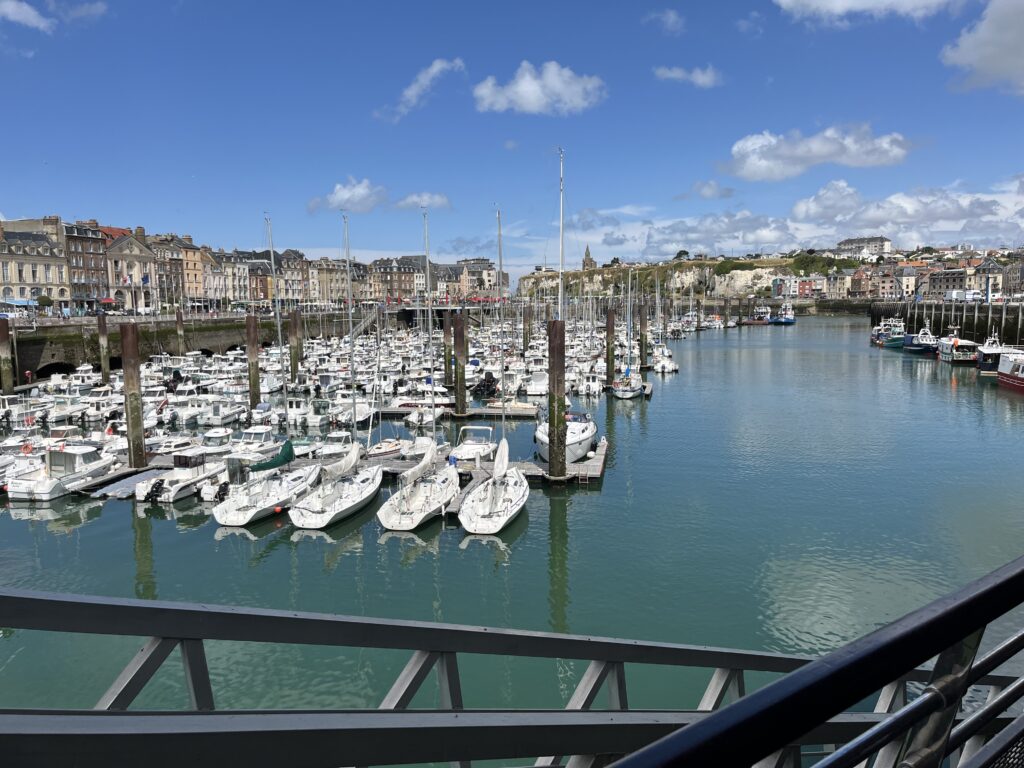
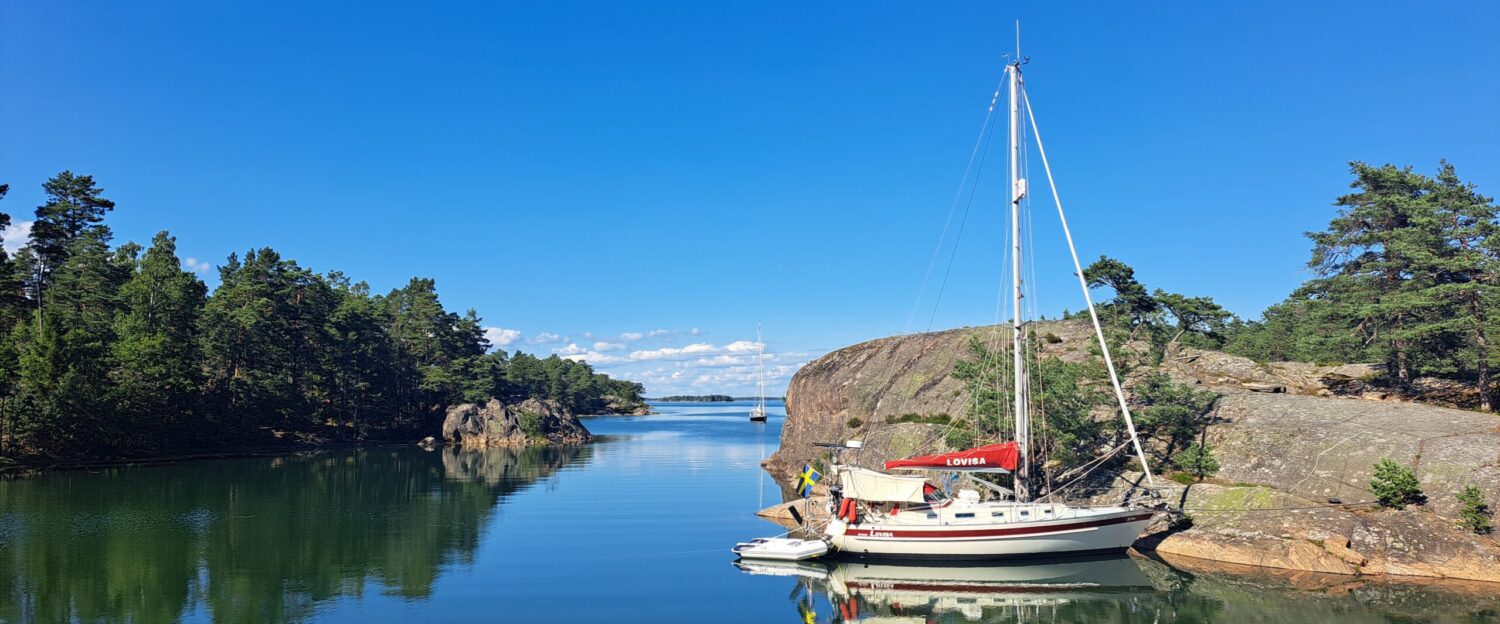
Bienvenue en France !!!
and I love your “proud to make it together !” 🙂
My son Simeon with his big family are already in The carribeans. I wish you all luck in The smallest and The big gest work you have to handle.
Så härligt för dem med semester i Karibien! Tack för fina ord.
Excited to read your sailing adventures the first time I opened your blog today after several weeks summer vacation! Inspired how far you can go when you pursue your dream with the other half you love. You rock Emilien!!
Thank you Li! So nice to see that you follow the adventure!
Les changements de temps sur la mer sont toujours impressionnants ! Les photos dans le brouillard sont belles aussi. Vous profitez de votre périple avec bonne humeur et zen attitude ! Et entre “voileux”, vous vous accordez :-). Bon vent, et à bientôt !